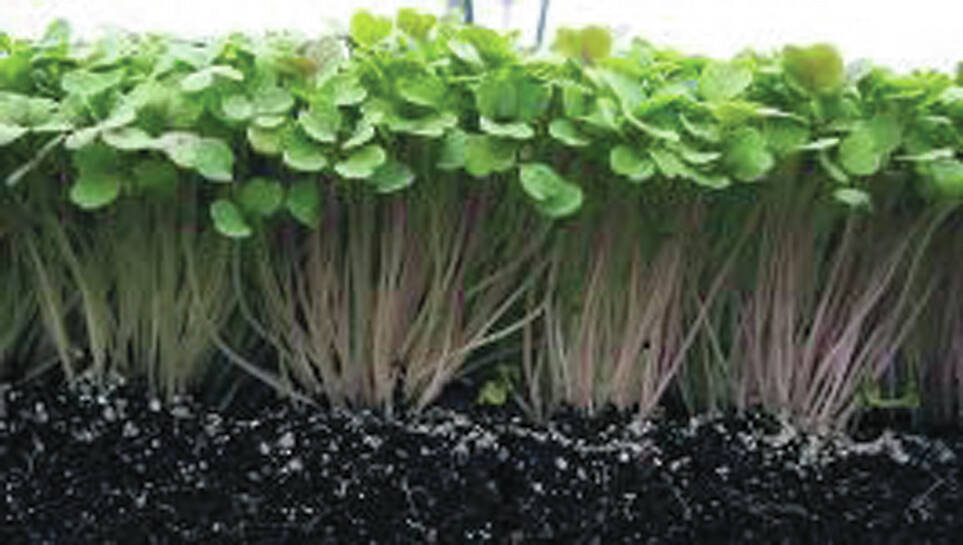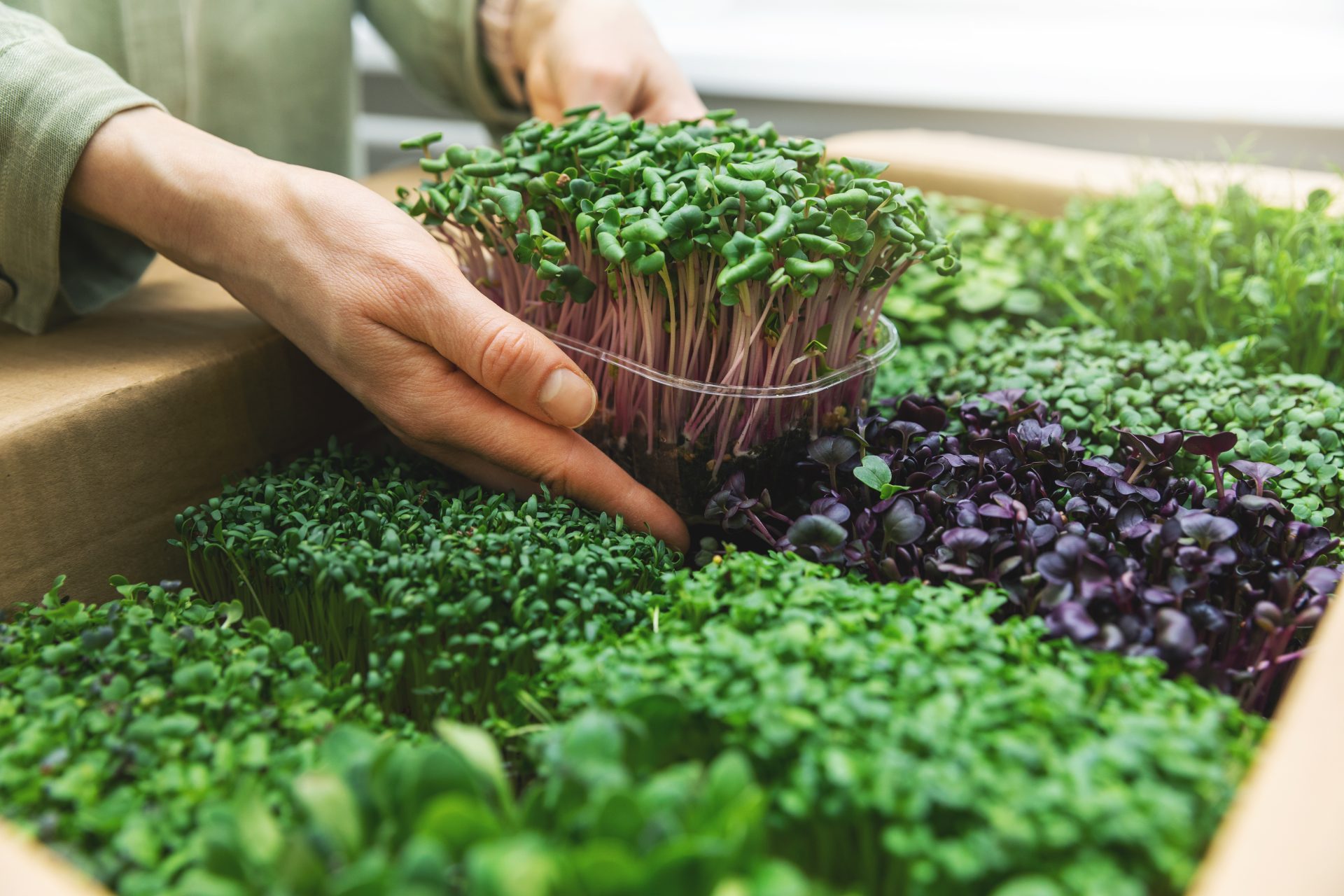|
Only have a minute? Listen instead
Getting your Trinity Audio player ready...
|
Microgreens may seem like the latest food fad, especially if you have recently discovered these tiny vegetable plants. There is evidence, however, that microgreens were grown by the Romans and Greeks, and they have been utilized for thousands of years.
In the last 15 years, research across the world has shown these tiny plants, made up of a stem and a set of first leaves, the cotyledons, or seed leaves, hold 4 to 40 times as much nutrition and beneficial compounds as the adult plant. The COVID 19 pandemic brought renewed attention to these tiny plants and how they could fill the nutrition gap especially for folks willing to grow their own plants.
Recently published studies showed that in some plants, the pair of cotyledons hold compounds not found in the adult version of the plant. How is that possible? Perhaps, even in the plant world, we have very protective moms who pack more into the seed than the young plant needs, just to be sure their offspring is safe. Or maybe the plant just needs extra help to get started. Whatever the reason, microgreens can be a powerful resource that can be beneficial to our health.
Microgreens are much milder in flavor than the adult plants, so they can be a great way to introduce children to vegetables. They are easy to add to a salad, smoothie, sandwich, stir fry or to top off a taco or fold into a scrambled egg.

Are they worth the effort? For most microgreens, the vitamins in the young plants are the same ones found in the adults, just present in higher amounts. The real bonus appears to be in the antioxidants, the powerful compounds that prevent or block cell damage.
Research shows broccoli microgreens can improve insulin resistance, helping to regulate blood sugar. And, when red cabbage microgreens are added to a high fat diet they reduce weight, triglycerides and LDL (bad) cholesterol — all risk factors in heart disease. Eye health may be improved with the regular consumption of spinach or broccoli microgreens due to the presence of the powerful antioxidant lutein.
Additionally, microgreens in the Brassica family (cabbage, broccoli, cauliflower, and more) contain sulforaphane, a compound shown to help prevent, block or possibly reverse cancer. Some studies show very promising results in preventing colon cancer and decreasing the presence of breast cancer and these studies are ongoing.
You can find locally grown microgreens at the Farmers Market at McAllen’s Firemen’s Park between 9 a.m. to noon Saturday, Oct. 19, and every Saturday throughout the year at Town Lake, 201 N. 1st St. Recipes are also available for inspiration.
This market also has locally grown vegetables, citrus, fresh mushrooms, and herbs, along with start-to-finish grass-fed beef and a wide variety of baked goods and jams and jellies. For directions or information, call (956) 330-6410.
Barbara Storz is a local horticulturist. You can follow her on Facebook.




